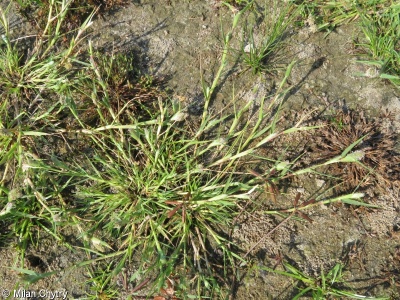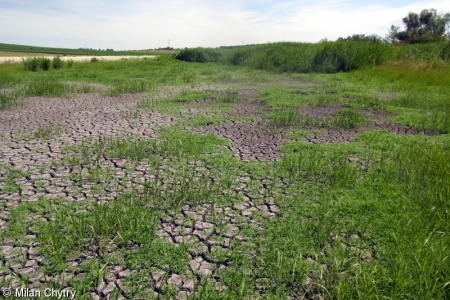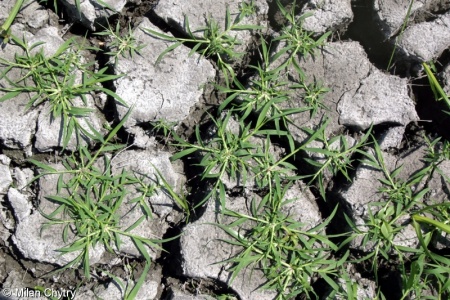Q63 Periodically exposed saline shore with pioneer or ephemeral vegetation
This habitat includes periodically flooded, saline and muddy, nutrient-rich shores and dried-up bottoms of saline standing water bodies and saline river banks. It occurs in the lowlands of continental Europe and arid Mediterranean regions. The bottom of these water bodies dries in summer, and salt efflorescence appear on the surface. The vegetation often starts to grow only in summer. There is a low to moderate cover of short salt-adapted plants, primarily grasses, but also sedges and dicot herbs. Most of these plant species are annuals, developing during the exposure phase, though some perennials tolerant of temporary inundation with brackish water also occur.
Chytrý M., Tichý L., Hennekens S.M., Knollová I., Janssen J.A.M., Rodwell J.S. … Schaminée J.H.J. (2020) EUNIS Habitat Classification: expert system, characteristic species combinations and distribution maps of European habitats. Applied Vegetation Science 23: 648–675. https://doi.org/10.1111/avsc.12519
Version 2025-10-03, https://doi.org/10.5281/zenodo.16895007.
For the official presentation of the EUNIS Habitat Classification from the European Environment Agency, please see: EUNIS Terrestrial Habitat Classification 2021. The FloraVeg.EU presentation may show modifications and partial updates to the habitat classification.


10.jpg)


1.jpg)
4.jpg)
5.jpg)
6.jpg)
7.jpg)